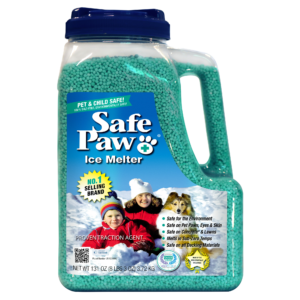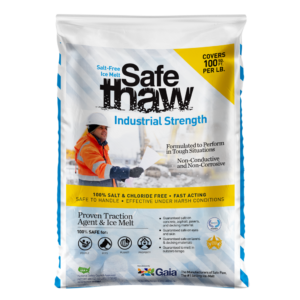Why Is Ice So Slippery? Here Is The Answer

We love the beautiful white landscape of winters but at the same time walking on ice is a real challenge. It is very well known and accepted that ice is slippery and results in slip and fall accidents. But, what makes ice so slippery like a viscous oil, whereas water by nature is not that slippery. In this article, let’s understand what makes ice slippery, when is ice safe to walk on and what we can do to improve traction to prevent ourselves from falling on the ice.
There is a science behind the slipperiness of ice. Ice becomes slippery due to friction. Strange. Isn’t it?
The friction on the ice causes a very thin layer of water to develop on top. That little bit of water laid over the icy surface is what causes the slipperiness.
The thin layer of water on the surface of the ice reduces the friction of the surface, making it slicker. The physical properties of this layer of water are different from that of other sources of water.
If you’re thinking about how much ice is safe to walk on a frozen lake then the answer is at least 4-inch ice layer thickness for walking.
But, how to walk safely on the ice without falling and avoiding slip and fall accidents.
We know that ice is slippery due to the presence of a thin layer of water on its surface. Therefore any agent that removes this excess water and gives a rough surface with better grip is ideal for improving traction on the surface. Walk on Ice is a traction agent that contains geo crystals and contains two types of granules.
The absorber granules maximize the absorption of the free water on the surface of the ice, and the gripper granules with their spiky structure bury themselves into the ice and create better traction for walking. Walk on Ice is an extremely helpful product when you need traction immediately and can’t wait for the ice to melt.
Some other organic traction agents are kitty litter, sawdust, sand, etc. These traction agents are not that effective and create a lot of mess to clean afterward.
You can also try shoes with spikes to get the desired traction for walking on ice. The only downside here is that the shoe spikes are difficult to put on & off, and you must take them off while walking on the hard surface. Metallic spikes tend to slip on hard tiles and flooring that might result in knee and ankle injuries.
Conclusion
Now, we know the reasons behind the slipperiness of ice and the answer to when is ice safe to walk on. In this article, we have mentioned some great tips to make you walk safely on the slippery ice in this winter season. You can adopt some or all to avoid any unfortunate incident.
Get ready for winter with Walk On Ice instant traction on snow and ice
Other Ice Melt Products
Safe Paw
The Original and the #1 Pet and Child Safe Ice Melt for over 20 years. Guaranteed environmentally safe – will not harm waterways and sensitive wetlands. Safe Paw can change how winter affects our planet.

Safe Thaw
Imagine an ice melt you can put down and never worry about. It won’t harm pets, kids and your property. That’s Safe Thaw. Unlike anything else on the market, Safe Thaw can change how winter affects our planet.



